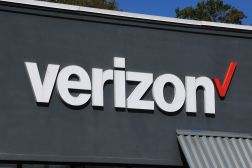- Sponsored
- Insights
5G: Making the connection for greater student and faculty success

Susan Kelemen is the Education Marketing Specialist at Verizon, responsible for creating and executing wireless solutions for higher education, K-12 and state/local communities.
Tony Dolezal is the Public Sector 5G and MEC (multi-access edge computing) Specialist at Verizon, with 25 years of experience in telecom, datacom and IP-based video.

One of the most challenging developments facing higher education institutions in recent years is how best to capitalize on the rapid evolution of digital technologies.
As universities and colleges continue to grapple with declining enrollments, rising production costs, and growing demand for flexible and convenient learning modalities, one thing is clear: As the competition for students, faculty and researchers continues to grow, so do the stakes for investing in the appropriate digital infrastructure to support their experience.
Fortunately, in contrast to long-term building projects, the continuing evolution of technology can help colleges and universities not only fast-track enhancements to the teaching and learning experience at their institutions but also reduce operating expenses. An excellent example of that — and one likely to significantly impact college campuses now and in the future — is 5G wireless connectivity.
While the national rollout of 5G has taken time, the more immediate ability for colleges and universities to deploy private 5G networks and begin taking advantage of them is already gaining momentum — in large part because of a combination of 5G’s greater speed, lower latency and expanded capacity.
College campuses, in many ways, are uniquely positioned to capitalize on 5G because of all the dimensions where 5G brings significant new capabilities, including:
Enhancing the classroom learning experience— 5G’s expanded bandwidth and low-lag latency enables institutions like Arizona State University to use extended reality (XR) headsets and other devices, like 3D printers and smart boards, in the classroom. Studies have shown that students retain 90% of the material learned through experience, compared to 30% of what they hear and 20% of what they see. 5G also facilitates the adoption of assistive learning technologies for those with special needs.
Expanding campus connectivity — 5G in combination with the emergence of Wi-Fi 6 and software-defined networking will allow institutions to create ubiquitous wireless coverage across campus and even campus housing, offering students, faculty and staff students seamless access to whatever resources they need. It also provides the foundation for enhanced security, improved transportation services, and connectivity at sporting events.
Augmenting existing network coverage – 5G can supplement — and add years to the useful life of — existing Wi-Fi solutions. For colleges and universities running out of wireless networking capacity on campus due to the structural limitations of their existing network infrastructure, 5G can help stretch your campus’s networking investments.
Improving network performance – 5G is 90% more efficient in energy use and three times more efficient in spectrum use. Moreover, 5G makes it possible to segment network traffic. That translates into more intelligent use of campus resources by devoting greater capacity and security where it is needed, for academic traffic, for instance, while reserving Wi-Fi for less critical demands.
Facilitating research and innovation – 5G provides the bandwidth, capacity and low-latency performance that students and faculty have come to expect, and institutions will increasingly need to compete in today’s education marketplace. Moreover, 5G can extend the learning experience by expanding where students and professors can access high-speed internet, giving higher education institutions a stronger footing to become global campuses.
Enhancing the sense of connectedness — As a recent blog from MIT’s Teaching + Learning Lab notes, a critical factor in student outcomes and success at higher education institutions hinges on whether students have a sense of belonging and connectedness. The same could be said for faculty and staff. Ubiquitous 5G wireless connectivity contributes in fundamental ways to wider efforts to support a sense of human connection and belonging on campus.
As prospective students continue to scrutinize the costs and the return on investment of postsecondary education in America, colleges and universities clearly recognize the need to rethink how they meet the educational needs of society in a diverse and rapidly evolving world. Given its advantages, ubiquitous, high-performing and low-latency 5G wireless connectivity represents one of the best investments colleges and universities can make.
Learn more about how high bandwidth 5G is changing higher education and how Verizon can help.




